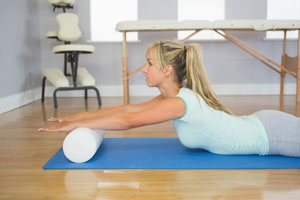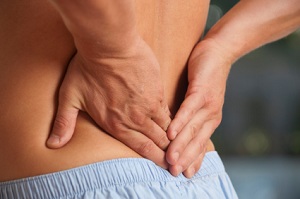
It is easy to ignore regular stretching sessions because you feel fit from the workouts. But the realization that you are not as perfectly fit as you thought sets in when you reach down for an object and are unable to get up again.
Once you start experiencing muscle twinges and knee aches, those are definite signs that something is clearly amiss. Flexibility exercises especially in preparation for the summer are a great way to prevent muscle constriction and pains. Summer is usually a fun time to explore various activities such as water-board skating, dancing, hiking and various other summer activities.
Regular flexibility exercises aids improve mobility and a variety of body movements. The more flexible the body is, the lesser the chances of acquiring an injury from summer activities as well as normal daily routines. Regardless of whether it’s dancing, mountain climbing or simply just swimming in the pool, these activities require great amount of force and flexibility for optimum body movement.
Here are a few common stretching exercises that are done to improve flexibility
1.Butterfly stretch
The butterfly stretch broadens muscles in the inner thigh and groin. One is required to sit on the floor with the feet flat to the ground. Let the knees drop to the ground and squeeze the soles of your feet together. Bring your heels close to your groin without causing pain. Your back should remain straight as you gently bounce your knees up and down repeatedly to loosen the muscles. The stretch should take about 8-10 seconds. Next, gently thrust your knees towards the ground using your elbows for another 8-10 seconds.
2.Kneeling quadriceps stretch
This enhances flexibility along the hamstrings and inner thigh as well as averts injury on the whole upper leg. It starts from a kneeling position. Bring the right foot forward and position it flat on the ground. The knee of your right leg should create 90 degrees angle. With your back still straight, slowly push your hips towards your right leg. You’ll be able to feel a stretch on your left quadriceps and right hamstring. Hold that position for about 10-15 seconds before doing a repeat with the left leg.
3.Arm and shoulder stretch
Flexibility doesn’t only apply to the back, waist and legs; arm and shoulder flexibility is also important for any activity. To start the shoulder stretch, connect your fingers and rotate your wrist in a manner that your palms are facing away from your body. Slowly lift your arms over your head and retain the stretch for approximately 10-15 seconds. Go back to the starting position and place your right hand behind your head. Grasp your right elbow with your right hand and carefully squeeze it down your back as far as you can without feeling a discomfort. Hold for 8-10 seconds then repeat the whole process with the left elbow.
There are various other flexibility stretches to aid one in preparation for the summer activities. It is important however to remember that in all exercises and stretches, safety comes first. Don’t over-do it to the point where you suffer an injury. Do smaller, simpler stretches, then with time progress to the more difficult ones after your body has gotten used to it.
For more articles go to http://lifesportfitness.lifestyleezine.com

 Self myofascial release (SMR) is a excellent way to improve flexibility and mobility of tight muscles and restricted joints. It works on two principles: it breaks up fascial adhesions and it manipulates certain neuromuscular receptors to let the muscle release any tightnessSelf myofascial release is the process of applying pressure to muscular knots with implements like balls and rollers to bring about a release of tension. Basically the same release one gets from static stretching. It may be likened to self-massage. With the correct instruction and extreme caution, it can be an incredibly effective skill set to have in your recovery ‘tool box.’ SMR permits an athlete to efficiently deal with some of the knots that develop during the course of their conditioning with out having to wait until their therapist is available for an appointment. When the athlete does eventually make an appointment with a massage therapist, their therapist can go to work on the really deep knots that pretty simply were impossible to get to before because of all the other tension in the muscles.
Self myofascial release (SMR) is a excellent way to improve flexibility and mobility of tight muscles and restricted joints. It works on two principles: it breaks up fascial adhesions and it manipulates certain neuromuscular receptors to let the muscle release any tightnessSelf myofascial release is the process of applying pressure to muscular knots with implements like balls and rollers to bring about a release of tension. Basically the same release one gets from static stretching. It may be likened to self-massage. With the correct instruction and extreme caution, it can be an incredibly effective skill set to have in your recovery ‘tool box.’ SMR permits an athlete to efficiently deal with some of the knots that develop during the course of their conditioning with out having to wait until their therapist is available for an appointment. When the athlete does eventually make an appointment with a massage therapist, their therapist can go to work on the really deep knots that pretty simply were impossible to get to before because of all the other tension in the muscles.